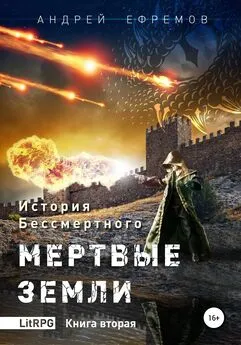Андрей Журавлёв - Сотворение Земли. Как живые организмы создали наш мир
- Название:Сотворение Земли. Как живые организмы создали наш мир
- Автор:
- Жанр:
- Издательство:Альпина нон-фикшн
- Год:2018
- Город:Москва
- ISBN:978-5-9614-5294-5
- Рейтинг:
- Избранное:Добавить в избранное
-
Отзывы:
-
Ваша оценка:
Андрей Журавлёв - Сотворение Земли. Как живые организмы создали наш мир краткое содержание
О том, как формировалась наша планета — такая, какой мы ее знаем, — книга Андрея Журавлева, палеонтолога, доктора биологических наук, профессора кафедры биологической эволюции биологического факультета МГУ.
Сотворение Земли. Как живые организмы создали наш мир - читать онлайн бесплатно ознакомительный отрывок
Интервал:
Закладка:
Hazen R. M. et al. 2008. Mineral evolution // American Mineralogist , 93, 1693–1720.
Hazen R. M. et al. 2011. Needs and opportunities for mineral evolution research // American Mineralogist , 96, 953–63.
Heinrich C. A. 2015. Witwatersrand gold deposits formed by volcanic rain, anoxic rivers and Archaean life // Nature Geoscience , 8, 206–9.
Hoffman P. F. et al. 2017. Snowball Earth climate dynamics and Cryogenian Geology-Geobiology // Science Advances , 3, e1600983. DOI: 10.1126/sciadv.1600983
Husnik F., McCutcheon J. P. 2016. Repeated replacement of an intrabacterial symbiont in the tripartite nested mealybug symbiosis // Proceedings of the National Academy of Sciences of the USA, 113, E5416–24.
Igisu M. et al. 2009. Micro-FTIR signature of bacterial lipids in Proterozoic microfossils // Precambrian Research, 173, 19–26.
Javaux E. J., Marshall C. P., Bekker A. 2010. Organic-walled microfossils in 3.2-billion-year-old shallow-marine siliciclastic deposits // Nature , 463, 934–8.
Johnson J. E. et al. 2013. Manganese-oxidizing photosynthesis before the rise of cyanobacteria // Proceedings of the National Academy of Sciences of the USA, 110, 11238–43.
Jørgensen B. B., Cohen Y., Revsbech N. P. 1986. Transition from anoxygenic to oxygenic photosynthesis in a Microcoleus chthonoplastes cyanobacterial mat // Applied and Environmental Microbiology , 51, 408–17.
Kah L. C., Riding R. 2007. Mesoproterozoic carbon dioxide levels inferred from calcified cyanobacteria // Geology , 35, 799–802.
Kasting J. F. 2005. Methane and climate during the Precambrian era // Precambrian Research , 137, 119–29.
Kaufman A. J., Xiao S. 2003. High CO 2levels in the Proterozoic atmosphere estimated from analyses of individual microfossils // Nature , 425. 279–82.
Kemp A. E. S., ed. 1996. Palaeoclimatology and Palaeoceanography from Laminated Sediments. Bath: Geol. Soc. London. 258 p. ( Geological Society of London, Special Publication, 116).
Kempe S., Kazmierczak J. 2002. Biogenesis and early life on Earth and Europa: Favored by an alkaline ocean? // Astrobiology , 2, 123–30.
Kirschvink J. L., Kopp R. E. 2008. Palaeoproterozoic ice houses and the evolution of oxygen-mediated enzymes: the case for a late origin of photosystem II // Philosophical Transactions of the Royal Society of London B: Biological Sciences , 363, 2755–65.
Koeksoy E., Halama M., Konhauser K. O., Kappler A. 2016. Using modern ferruginous habitats to interpret Precambrian banded iron formation deposition // International Journal of Astrobiology , 15, 205–17.
Knoll A. H., Javaux E. J., Hewitt D., Cohen P. 2006. Eukaryotic organisms in Proterozoic oceans // Philosophical Transactions of the Royal Society of London B: Biological Sciences, 361, 1023–38.
Knoll A. H., Canfield D. E., Konhauser K. O., eds. 2012. Fundamentals of Geobiology, 1st ed. Chichester: Wiley-Blackwell, 456 p.
Konhauser K. O., Kappler A., Roden E. E. 2011. Iron in microbial metabolism // Elements , 7, 89–93.
Kump L. R., Barley M. E. 2007. Increased subaerial volcanism and the rise of athmospheric oxygen 2.5 billion years ago // Nature , 448, 1033–6.
Lécuyer C. 2016. Seawater residence times of some elements of geochemical interest and the salinity of the oceans // Bulletin de la Société géologique de France, 187, 245–60.
Lepland A. et al. 2014. Potential influence of sulphur bacteria on Palaeoproterozoic phosphogenesis // Nature Geoscience, 7, 20–4.
Li Z.-X., Evans D. A. D., Halverson G. P. 2013. Neoproterozoic glaciations in a revised global palaeogeography from the breakup of Rodinia to the assembly of Gondwanaland // Sedimentary Geology, 294, 219–32.
Li Z.-X., Evans D. A. D., Murphy J. B., eds. 2016. Supercontinent Cycles Through Earth History. Bath: Geol. Soc. London, 297 p. ( Geological Society of London, Special Publication, 424).
Liu X.-M. et al. 2016. Tracing Earth’s O 2evolution using Zn/Fe ratios in marine carbonates // Geochemical Perspectives Letters, 2, 24–34.
Lyell C. 1851. On fossil rain-marks of the Recent, Triassic, and Carboniferous periods // Quarterly Journal of the Geological Society , 7, 238–47.
Lyons T. W., Reinhard C. T., Planavsky N. J. 2014. The rise of oxygen in Earth’s early ocean and atmosphere // Nature , 506, 307–15.
Marin-Carbonne J., Robert F., Chaussidon M. 2014. The silicon and oxygen isotope composition of Precambrian cherts: A record of oceanic paleo-temperatures? // Precambrian Research, 247, 223–34.
Marshall C. P., Javaux E. J., Knoll A. H., Walter M. R. 2005. Combined micro-Fourier transform infrared (FTIR) spectroscopy and micro-Raman spectroscopy of Proterozoic acritarchs: A new approach to Palaeobiology // Precambrian Research , 138, 208–24.
Martin F. 1993. Acritarchs: A review // Biological Reviews, 68, 475–538.
Marty B., Zimmermann I., Pujol M., Burgess R., Philippot P. 2013. Nitrogen isotopic composition and density of the Archean atmosphere // Science , 342, 101–4.
Matthews R. K., Frohlich C., Duffy A. 1997. Orbital forcing of global change throughout the Phanerozoic: A possible stratigraphic solution to the eccentricity phase problem // Geology , 25, 807–10.
Melezhik V. A., ed. 2013. Reading the Archive of Earth’s Oxygenation. V. 3: Global Events and the Fennoscandian Arctic Russia — Drilling Early Earth Project. Berlin; Heidelberg: Springer, p. 1048–1552.
Michaelian K., Simeonov A. 2015. Fundamental molecules of life are pigments which arose and co-evolved as a response to the thermodynamic imperative of dissipating the prevailing solar spectrum // Biogeosciences , 12, 4913–37.
Moczydłowska M., Landing E., Zang W., Palacios T. 2011. Proterozoic phytoplankton and timing of chlorophyte algae origins // Palaeontology, 54, 721–33.
Nance R. D., Murphy J. B., Santosh M. 2013. The supercontinent cycle: A retrospective essay // Gondwana Research , 25, 4–29.
Noffke N., Christian D., Wacey D., Hazen R. M. 2013. Microbially induced sedimentary structures recording an ancient ecosystem in the ca. 3.48 billion-year-old Dresser Formation, Pilbara, Western Australia // Astrobiology , 13, 1103–24.
Norman M. D., Borg L. E., Nyquist L. E., Bogard D. D. 2003. Chronology, geochemistry, and petrology of a ferroan noritic anorthosite clast from Descartes breccia 67215: Clues to the age, origin, structure, and impact history of the lunar crust // Meteoritics & Planetary Science, 38, 645–61.
Nutman A. P. et al. 2015. 3806 Ma Isua rhyolites and dacites affected by low temperature Eoarchaean surficial alteration: Earth’s earliest weathering // Precambrian Research , 268, 323–38.
Och L. M., Shields-Zhou G. A. 2012. The Neoproterozoic oxygenation event: Environmental perturbations and biogeochemical cycling // Earth-Science Reviews , 110, 26–57.
Omelon C. R. et al. 2013. Microstructure variability in freshwater microbialites, Pavilion Lake, Canada // Palaeogeography, Palaeoclimatology, Palaeoecology, 392, 62–70.
Papineau D., Mojzsis S. J., Karhu J. A., Marty B. 2005. Nitrogen isotopic composition of ammoniated phyllosilicates: Case studies from Precambrian metamorphosed sedimentary record // Chemical Geology , 216, 37–58.
Partin C. A. et al. 2013. Large-scale fluctuations in Precambrian atmospheric and oceanic oxygen levels from the record of U in shales // Earth and Planetary Science Letters , 369–370, 284–93.
Payne J. L. et al. 2009. Two-phase increase in the maximum size of life over 3.5 billion years reflects biological innovation and environmental opportunity // Proceedings of the National Academy of Sciences of the USA, 106, 24–27.
Pavlov A. A., Kasting J. F., Eigenbrode J. L., Freeman K. H. 2001. Organic haze in Earth’s early atmosphere: Source of low- 13C Late Archean kerogens? // Geology , 29, 1003–6.
Petroff A. P. et al. 2010. Biophysical basis for the geometry of conical stromatolites // Proceedings of the National Academy of Sciences of the USA, 107, 9956–61.
Petrov P. Yu., Semikhatov M. A. 2001. Sequence organization and growth patterns of late Mesoproterozoic stromatolite reefs: an example from the Burovaya Formation, Turukhansk Uplift, Siberia // Precambrian Research, 111, 257–81.
Phoenix V. R., Konhauser K. O. 2008. Benefits of bacterial biomineralization // Geobiology , 6, 303–8.
Planavsky N. J. et al. 2014. Low Mid-Proterozoic atmospheric oxygen levels and the delayed rise of animals // Science , 346, 635–8.
Pufahl P. K., Hiatt E. E. 2012. Oxygenation of the Earth’s atmosphere — ocean system: A review of physical and chemical sedimentologic responses // Marine and Petroleum Geology, 32, 1–20.
Ratti S., Knoll A. H., Giordano M. 2013. Grazers and phytoplankton growth in the oceans: an experimental and evolutionary perspective // PLoS ONE , 8 (10), e77349. DOI: 10.1371/journal.pone.0077349
Reddy S. M., Mazumder R., Evans D. A. D., Collins A. S., eds. 2009. Palaeoproterozoic Supercontinents and Global Evolution. Bath: Geol. Soc. London, 272 p. ( Geological Society of London, Special Publication, 323).
Reimer P. J. et al. 2004. IntCal04 terrestrial radiocarbon age calibration, 0–26 cal kyr BP // Radiocarbon , 46, 1029–58.
Reimink J. R. et al. 2016. No evidence for Hadean continental crust within Earth’s oldest evolved rock unit // Nature Geoscience , 9, 777–80.
Reith F., Brugger J., Zammit C. M., Nies D. H., Southam G. 2013. Geobiological cycling of gold: From fundamental process understanding to exploration solution // Minerals , 3, 367–94.
Riding R. 2008. Abiogenic, microbial and hybrid authigenic carbonate crusts: components of Precambrian stromatolites // Geologia Croatica , 61, 73–103.
Rosing M. T., Bird D. K., Sleep N. H., Glassley W., Albarede F. 2006. The rise of continents — An essay on the geologic consequences of photosynthesis // Palaeogeography, Palaeoclimatology, Palaeoecology, 232, 99–113.
Rutherford E. 1904. The radiation and emanation of radium // Technics , 1–16, 171–5.
Sagan C., Mullen G. 1972. Earth and Mars: Evolution of atmospheres and surface temperatures // Science , 177, 52–6.
Schidlowski M. 1998. Application of stable carbon isotopes to early biochemical evolution on Earth // Annual Review of Earth and Planetary Sciences, 15, 47–72.
Schoell M., Wellmer F.-W. 1981. Anomalous 13С depletion in early Precambrian graphites from Superior Province, Canada // Nature , 290, 696–9.
Schopf J. W., Klein C., eds. 1992. The Proterozoic Biosphere: A Multidisciplinary Study. Cambridge et al.: Cambridge Univ. Press, 1348 p.
Schopf J. W. et al. 2017. SIMS analyses of the oldest known assemblage of microfossils document their taxon-correlated carbon isotope composition // Proceedings of the National Academy of Sciences of the USA. DOI: 10.1073/pnas.1718063115
Читать дальшеИнтервал:
Закладка:
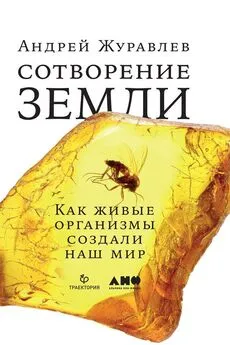

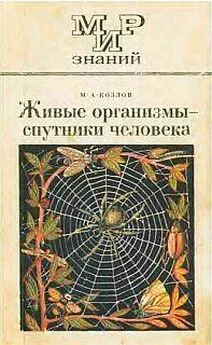
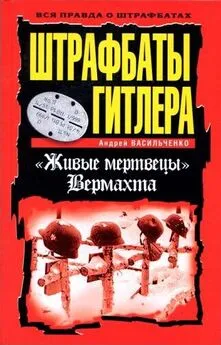
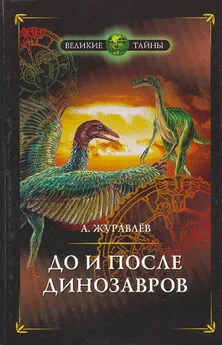
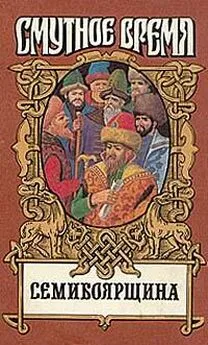
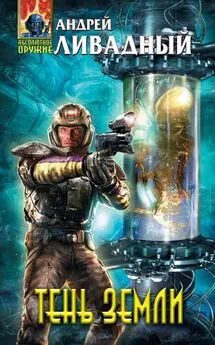
![Андрей Максимов - Самоубийство Земли [Повести и рассказы]](/books/1059571/andrej-maksimov-samoubijstvo-zemli-povesti-i-rass.webp)
